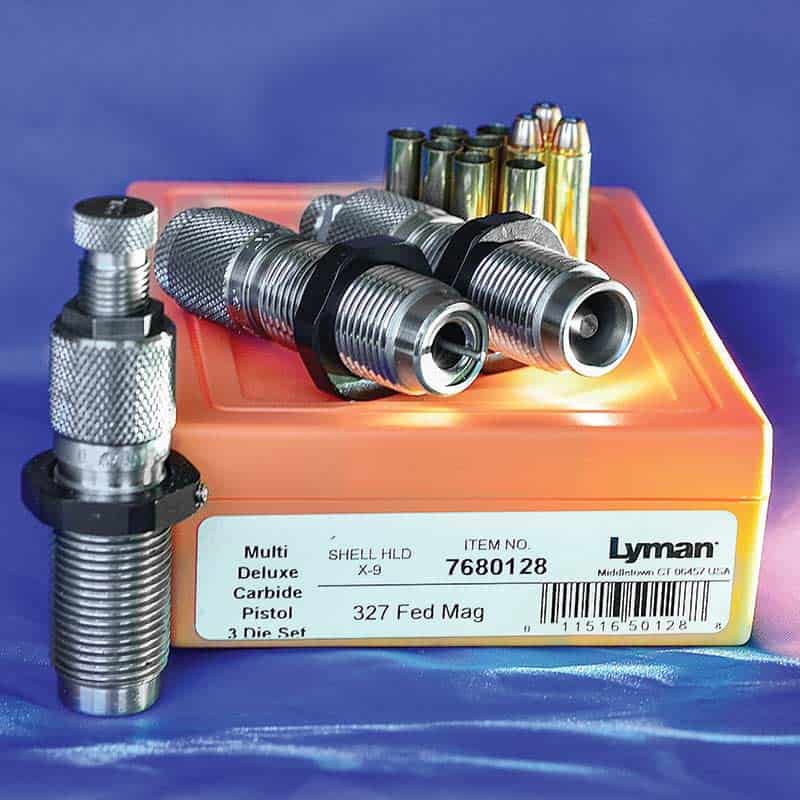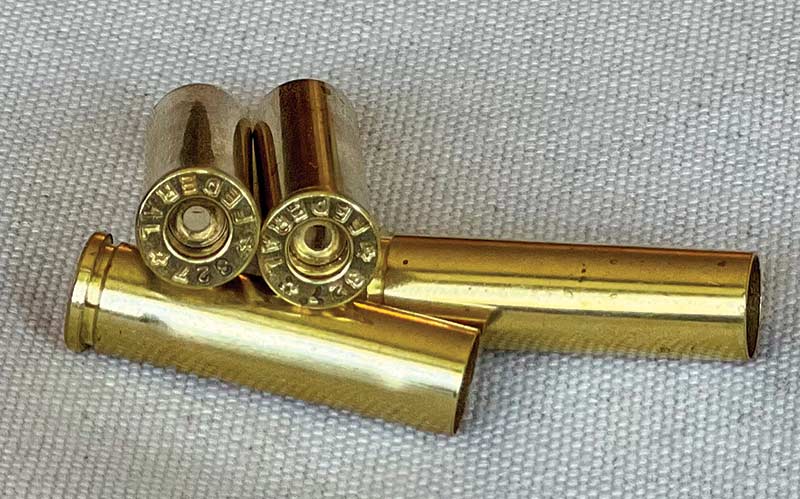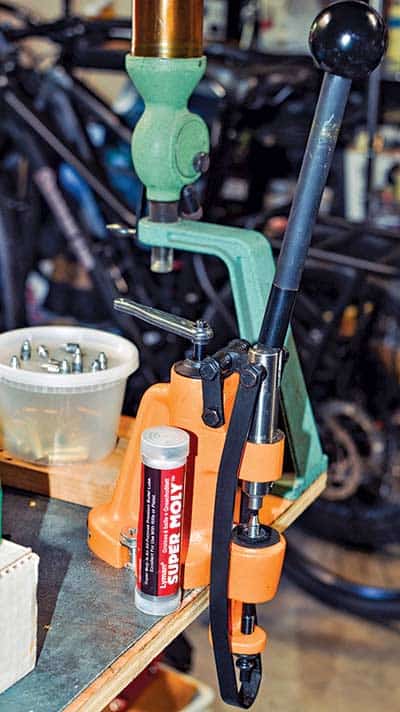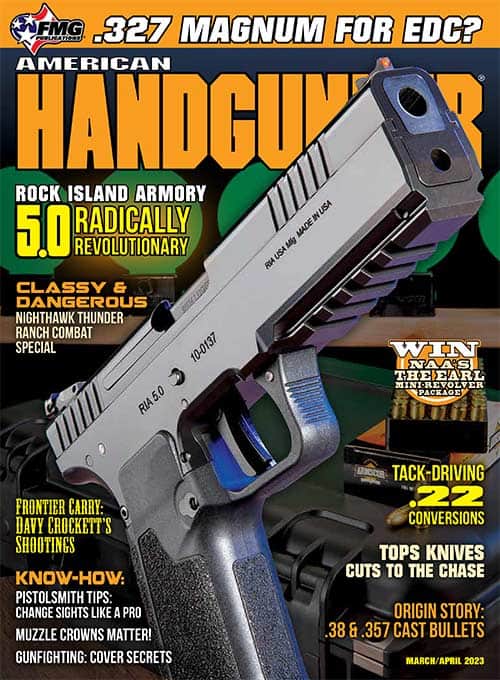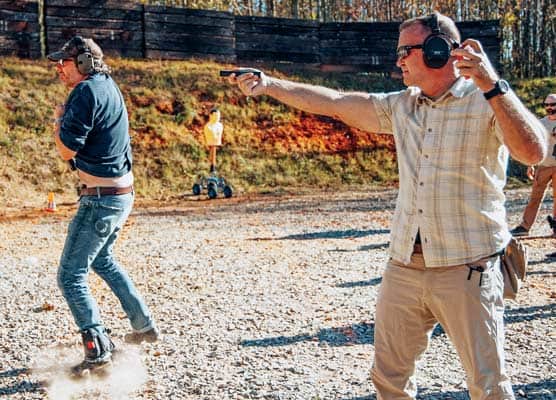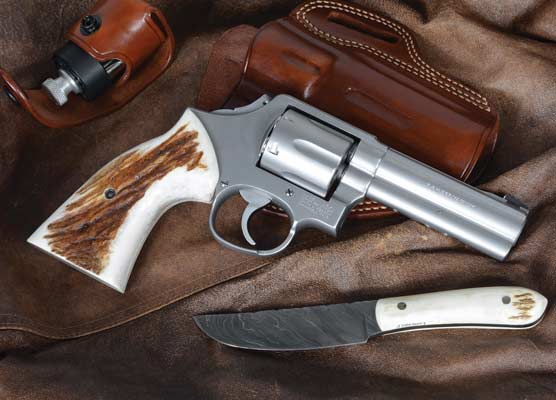My EDC: The .327 Federal Magnum
I am starting my campaign to make the .327 Federal Magnum the most popular revolver cartridge ever. The arguments for it are easy. It’s an effective defensive caliber, one of the easiest calibers to reload, and it has more versatility than any other revolver cartridge. If I bring a revolver to a gunfight, this is the caliber.
The .327 Magnum is a rimmed, straight-walled cartridge based on the .32 Magnum. It’s also .312 caliber but with a 1/8″ longer case. The brass uses better metallurgy and has more reinforcement at the web, being designed for pressures up to 45,000 psi.
I have found the best weight range for this caliber is 75-125 grains because they are the easiest to reload. There are 60-75 grain bullets, mostly designed for the .32 Auto. They may work all right in the .32 Long, but they need some tweaking to load in .327.
Many loads I used here kept the standard deviation in single digits. I cannot do that with a .357 magnum. There is something about the .327 that is inherently consistent. For example, the Lee TL-314-90-SWC load, using 4.7 grains of HP 38, didn’t deviate more than 25 fps. This is quite a feat since powder dispensing can vary a tenth of a grain.
Use Lyman
Lyman “Orange Box” die sets use an M-type expander, which gives two advantages to the .327 reloader. First, the die is an open body, which allows the case mouth to open, and it doesn’t get resized again in the downstroke. Second, the Lyman die uses a unique taper, gentler on cases, allowing more reloads and less trimming. For the .327 Magnum, I would pick Lyman every time.
Crimping is critical on the .327. Check your crimp by loading a dummy bullet, then pulling it. Inspect for changes in diameter or deep ring marks. Either one means your crimp is too tight. The caliper is your friend.
The Right Components
If you’re reloading .327 Magnum for plinking, it’s all right to pick up range brass. With my practice loads listed here, you might get as many as eight reloads without trimming, but I would begin gauging the brass length after five. However, for ideal accuracy and consistency, I have the secret sauce: Starline Brass.
There is another reason to use Starline Brass. It carries a “327 Federal” headstamp. Since it is hard to distinguish three of the sister calibers, .32 Magnum, .32 Long, and .327 Magnum, having a clear headstamp prevents “kabooms.”
For all of my .327 loads, I use Winchester Small Pistol Primers. The burning chamber of the .327 is limited, so the controversy of, “Should I use magnum primers?” is of lesser importance. This is not one size fits all, but a small pistol primer is a safe bet for .327.
Because of the smaller burning chamber, my powder selection priorities are precision metering first and clean burning second. Ramshot True Blue, HP 38, and Accurate #5 are top of my list. With True Blue, I get great velocity, low recoil, low muzzle flash and a clean burn. With Accurate #5, I get consistency and precision metering. You already know HP 38 gave me a low SD.
Jacketed and Lead
Standard .327 jacketed bullets run .312″. I loaded some Hornady 100-grain, .312″ XTP bullets, and my LCRx spat them out almost in the same place on the target. Using 7.4 grains of True Blue, they ran just shy of 1,190 fps. When I fired them at bare ballistic gelatin, they generally exceeded 19″ of penetration. This is a moderately hot load and it screams out of my 1.87″ LCRx barrel.
Cartridge OAL is critical for this load; I used 1.49″. I experimented with loads between 7.0 and 7.4 grains. The 7.4-grain load seemed to work the best, but be aware it is loud!
I also tried 78-grain Rim Rock Bullets, which are sized .313″. These bullets are always first quality, and I pushed them consistently to 1,300 fps, which they handle well. Let’s see, 8.5 grains of Accurate #5 will get you there, but, like all load recommendations, begin at least 10% lower and work your way up. The OAL for this load is 1.462″. You’ll feel this load in hand, unlike other softer recoiling loads.
I fired bullets made with a Lee Precision TL-314-SWC mold designed for Lee’s Tumble Lube. I used my Lyman 4500 to lube and size them to .314″. Note 4.5 grains of HP 38 drives this bullet to 1,050 fps using an OAL of 1.46″.
My range buddies believe I’m obsessed with the .327. I am. It can do amazing things, demonstrate outstanding accuracy in a snubnose, and is excellent for defense.

